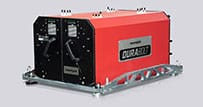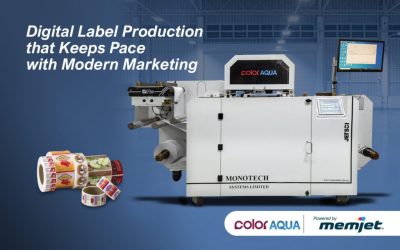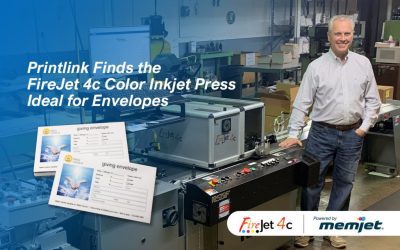By David Zwang, Editor/Analyst
2020 was a transformative year for labels and packaging. Much of that had to do with the pandemic-driven shift in consumer behavior, which in combination with new digital press introductions has affected packaging procurement models. This has accelerated the existing trends and now bodes well for the digital packaging evolution.
Some Background
In the 1990’s digital print was introduced, with a flurry of excitement and lots of projections about how this would lead to the explosion of variable data printing, one-to-one marketing and the ultimate demise of offset printing. The reality is that it took digital print almost 15 years to reach the level of offset print volume. If digital print was introduced in the early 1990’s, and it has taken so long for it to reach its predetermined goals, in the case of digital packaging production, are we in for the same long ride or can we learn from history?
Digital Packaging the Next Wave
Early adoption of digital packaging production was relegated to prototypes, short-run and variable data applications that supported marketing campaigns. It is now gaining mainstream acceptance as a result of the successful implementation of digital label printing, which now represents in excess of 25% of total label production globally. However, there has also been an expansion of available digital packaging solutions that can be used to support other packaging applications including flexible packaging, folding carton and corrugated. These digital solutions are being used in place of flexo and offset as they are increasingly available to satisfy the requirements of shorter “on-demand” runs. Granted, the digital solutions currently available may be a bit slower and the output even a little more costly than some of the flexo solutions. However, digital production allows you to create focused and more optimized processes based on specific requirements instead of trying to fit work with different requirements into the same production processes. Designed well, that could provide more cost-effective and timely solutions with fewer setups and less handling. The compact nature of OEM solutions like those Powered by Memjet inkjet technology combined with the low-cost and high-performance capabilities enables customers to streamline processes to reduce cost. Preprint and postprint corrugated applications are already gaining market traction and the digital production of folding cartons is about to see increased growth with the introduction of many new cut-sheet digital press solutions. The continued growth of flexible packaging replacing rigid containers in the form of stand-up pouches is another of the growth applications for digital print. Pouches, which are easier and less costly to ship actually use anywhere from 40-70% less plastic than rigid-container and label combinations and are increasingly attractive to brands and sustainability-conscious consumers alike.
The Best of Both Analog and Digital
Hybrid, or ‘multiple connected printing and finishing technologies’, have been around for decades. Although not as prevalent as they are becoming today with the growth and availability of disparate inkjet components and solutions, combined with the growth of machine and process digitization. Bespoke solutions, or ‘custom designed application-based printing’ is the natural extension of the same hybrid capabilities. Memjet OEMs like Colordyne, Konica Minolta, PCMC, and others are increasingly integrating printheads into a variety of different inkjet and hybrid machine configurations to support packaging print applications. The groundbreaking MGI AlphaJET Industrial Print Factory brings a unique approach to high-quality folding carton and corrugated print applications. These types of Powered by Memjet solutions are finding their way into a variety of different machines to support a variety of stand-alone print applications, as well as print as a function of product manufacturing, including 3D.
Drivers for Digital Print in Packaging
Increased cost competition between digital and analog packaging production can be attributed to the explosion of inkjet press solutions as well as hybrid solutions, making digital more competitive, and it is expected to continue. In the last year, there have been a significant amount of new digital press introductions a great deal of that attributed to the rapid development of inkjet technologies like those from Memjet. The development of package printing solutions Powered by Memjet has been increasing and includes partners like Rigoli and V-Shapes who have created targeted application solutions. The increase in market segmentation, and the need to keep up with regulatory label changes, have affected packaging procurement and has been moving from an annual or semi-annual production purchase and warehouse model to produce what is needed for current production or on-demand model. The cost of obsolescence combined with the more competitive costs now available with digital packaging production makes a very compelling case for on-demand packaging procurement. On-demand packaging procurement is also being facilitated by online web-to-pack solutions that provide a way to design, proof, and order packaging in quantities from one to thousands, with quick turnarounds. Ultimately, brand identity and shelf appeal are still the key attributes of packaging. Digital printing and embellishment technologies are providing the solutions needed to support the needs of on-demand package printing. Increasingly they are integrated into complete inline production solutions.
Increasing the Adoption Rate
So, the short story is that the rate of adoption is directly affected by the rate of adaptation. That could mean that in addition to promoting the value of the new technology or process, you also need to reduce the perceived risk to the people involved. Some printing companies started the transition slowly and created separate digital divisions or locations in the same plant. It also may mean that you need to look at the impact of the new technology on the entire process and not just the specific technology replacement and make the necessary changes. By the way, that could also mean benefits for your clients’ and partners’ processes as well, which is also an opportunity for creating closer relationships. As an industry, the impact of digital print found its way to the transformation of many companies. It also led to a lot of industry consolidation. However, we are all learning to live with and even enjoy the new realities that digital printing has facilitated in packaging production. The industry is ready. Packaging industry trends seem to indicate a desire to run more operations inline to minimize handling and waste, and to keep turn times low for the increasingly short-run jobs. Interestingly, the packaging market is having many of the same discussions that commercial print has been having for years: inline, nearline, offline, and when does it make sense to create a complete purpose-built production line? Ultimately, if we are going to achieve the dream/reality of “Industry 4.0,” this type of production approach will have to become more mainstream. Obviously, if your business is not producing short runs, or if you have a mix of short and long runs, you probably need an analog (flexo), hybrid or both, depending on business requirements.
Summary
There are a lot of digital packaging solutions out there and more are being developed. This is being facilitated by an increasing number of rapid development inkjet components like those from Memjet to support the variety of print manufacturing requirements. The whole digital evolution today is really just a part of the industry’s transformation and transition to the real end game—purpose-built or bespoke solutions. It may not be the solution for all print and packaging manufacturing; however, it will undoubtedly make a dent and continue to grow.
Learn more about Memjet’s digital inkjet technologies.



























